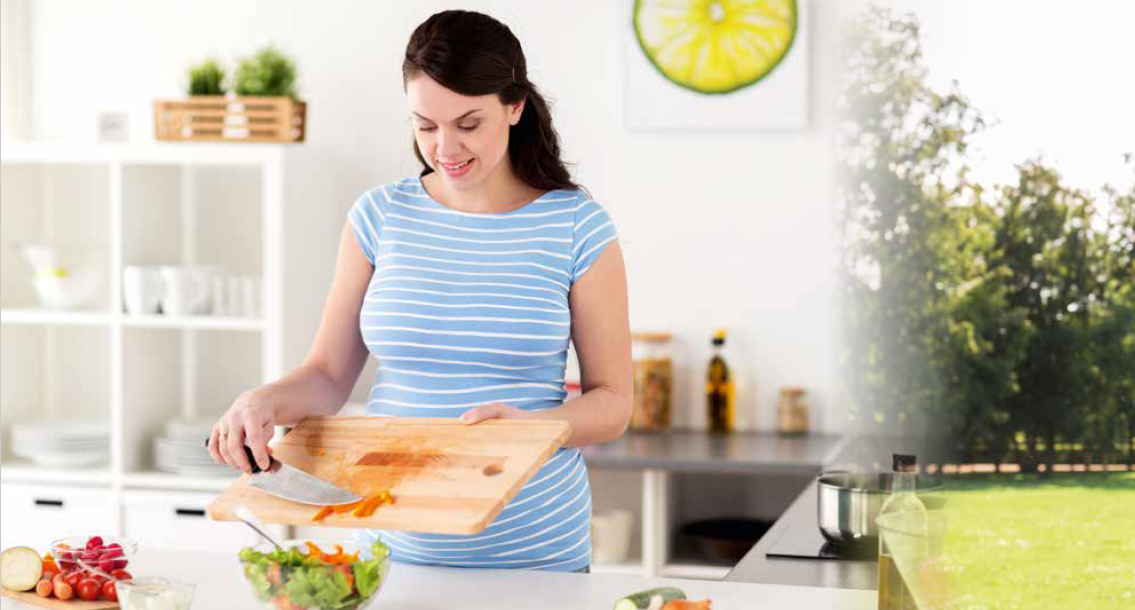
Pregnancy provides a range of new experiences as your body changes and grows to accommodate your baby. But many women can experience light bladder leakage or pregnancy incontinence, and this can sometimes continue once your new bundle of joy has arrived. It’s nothing to be worried about, ashamed of or embarrassed about – it’s simply part of the extra pressures your body faces during pregnancy.
Light bladder leakage is more common than you’d expect, with a third of women experiencing symptoms at some point in their life.
During pregnancy your body experiences many changes and, as your baby grows, often the pressure on your bladder will increase too. All the extra weight pressing down on your pelvic floor muscles weakens them, which can mean the amount of urine your bladder typically holds decreases. So, during pregnancy you’ll find yourself having to urinate more frequently, or you may experience loss of bladder control.
Even after having your baby, you might find your bladder leakage still wants to hang around.
Why? Well, pushing your baby through the birth canal places all sorts of stretching pressures on most of your pelvic organs. Childbirth puts a huge strain on your bladder and the supporting muscles of your pelvic floor. Vaginal delivery, a perineum tear or episiotomy (cut in the perineum that makes it easier for the baby to come out), as well as damage to the nerves of the bladder, make loss of bladder control a common issue for new mums. Some women are able to withstand that kind of pressure more than others, but many may find the process has put a huge strain on their bladder.
While most women will eventually slowly regain control of their bladder, it’s important to note though that this can often be aggravated again further down the track (and by further down the track, we hopefully mean many years), by natural changes we all face as we age – like menopause.
Pregnancy incontinence should only last for a short period after giving birth, enough time to allow muscles to be regained. If you’re still experiencing light bladder leakage more than six weeks after you’ve given birth you should consult your doctor. It’s always recommended that you talk to your midwife, GP or healthcare professional when it comes to helping you determine, control and improve your loss of bladder control to fit with your own unique lifestyle.
Exercising your pelvic floor
Also known as Kegel exercises, pelvic floor exercises are key to repairing and strengthening your muscles and get you back in control of your bladder weakness. It’s never too late to start, whether you have a tiny newborn or an active four-year-old.
Pelvic floor exercises are essential to every woman’s exercise routine and can be done anytime, anywhere, and without anyone noticing. Not only do they increase your control over your bladder, your pelvic floor also supports your vagina, uterus and bowel – so keeping your pelvic floor in good working order is beneficial for women of all ages and stages of life.
A strong pelvic floor may also help shorten the second stage of labour and, after childbirth, Kegel exercises may also help to heal any damage by increasing blood supply to the area.
Anywhere any time
Exercising your pelvic floor can be incorporated into your everyday life, and can be done anywhere and at any time. It is a gentle exercise, yet very effective in treating bladder leakage.
Like any form of exercise, it’s best to try different methods in order to get all of the pelvic floor muscles working. These can include quick exercises, where the pelvic floor muscles are quickly tightened then relaxed; and slow exercises, where the pelvic floor muscles are tightened for 10 seconds before relaxing. These exercises work best when each squeeze of the pelvic floor muscles is as tight as possible.
All you have to do…
Step 1
Sit, stand or lie down with your legs slightly apart and relax your thighs, buttocks and abdomen muscles.
Step 2
Tighten the ring of muscle around your front and back passages drawing the pelvic floor muscles up inside.
Step 3
Try to complete up to 10 slow squeezes and 10 fast squeezing exercises.
Step 4
Repeat these exercises 4–5 times every day.
How to identify your pelvic muscles
Identifying your pelvic floor muscles can be a bit tricky and it takes practice to find and squeeze your pelvic floor correctly. Whilst locating these muscles, refrain from using your stomach, buttock and leg muscles when trying these methods.
If you continue to have difficulty, speak to your doctor to determine the best ways to manage and reduce leaks for you and your body.
You can identify the muscles located around the bladder opening by starting and stopping your urine stream. If you are able to stop mid-stream, you’re using your pelvic floor muscles.
Another way to identify pelvic muscles and complete your pelvic floor exercises is to tighten the muscles around your back passage (as when holding back wind or at the end of a bowel movement). A proper pelvic floor squeeze also works to lift the engaged muscles upwards. Use a hand mirror to see if you can notice any upward movement when you contract your pelvic floor muscles.
Don’t stop drinking water
Holding back on hydration is one of the first things women do to combat light bladder leakage. Drinking water comes easily for some people – they just really enjoy it. For others, it can be a little bit harder to embrace the H2O. And then there are some who avoid it because they think it will add to their bladder weakness.
It’s a myth.
In fact, the concentration of urine from low hydration can actually irritate the bladder.
Symptoms may also get worse when you are stressed or triggered by caffeine or alcohol.
So, don’t avoid drinking water, but stick to sipping often throughout the day versus large amounts at one time. Also try keeping a diary of foods and drinks which might make your light bladder leakage worse. This will help you understand whether certain acidic, spicy or salty foods are having an effect on your bladder.
It’s a common belief we need to drink eight glasses of water a day for optimal health. This isn’t actually necessary, as most of what we need is already in our food, but there are still lots of reasons to drink plenty of water.
Wonder water – Did you know?
Water can keep your weight down.
If you are hungry and it’s between meal times, have a glass of water before you reach for the chocolate biscuits.
Water helps energise your muscles during exercise.
When muscle cells don’t have enough fluid, performance can be compromised as they don’t work as well. Make sure you drink a small amount of water before, as well as during, exercise.
Water helps you look good.
If you’re dehydrated, your skin can look dry and more wrinkled than normal. When you are properly hydrated your kidneys work at their best to get rid of excess fluids.
If you are holding back on water, it’s time to stop.






